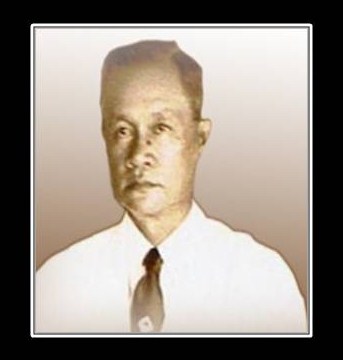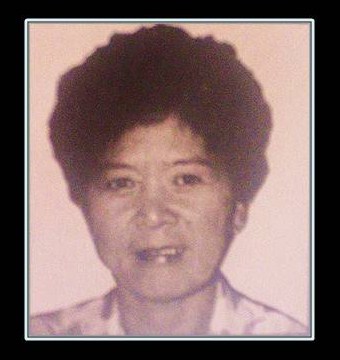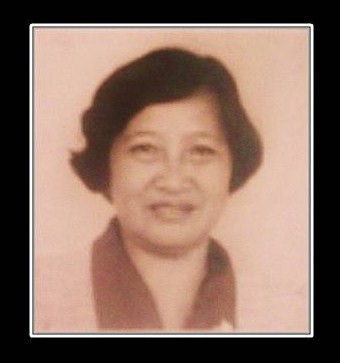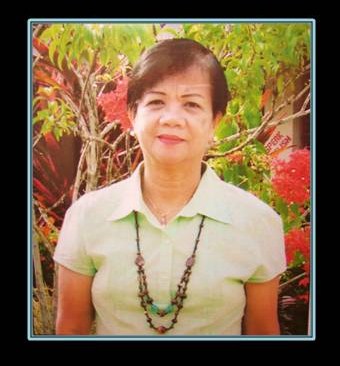INTRODUCTION:
The Filipino value for education is immensely essential that our youth-learning/studies are prioritized among other needs. When World War II broke out in 1940, the education for our youth was disrupted. At their tender ages, many courageously defended the country by joining the resistance Filipino and American soldiers, while the rest simply settled unproductively in the cities, countryside, in the farms, and in the evacuation sites. It was such a very sad scenario for any Filipino youth highly motivated to attain a higher education.
After the liberation, most if not all parents returned to their homes and eagerly wanted to send back their children to school. But because of the destruction of many provinces and towns where many roads were out of shape, the parents had the difficulty of fulfilling their dreams sending their children back to school.
Meanwhile in Tandag, a private school had been put up by the Sacred Heart Missionary Priests since the first decade of the 19th century. Tandag was already a thriving community by then with a population of around four thousand residents. Initially, this private school efficiently served the youth in their quest for knowledge. As the years went on however and as the students’ population increased, this private school was unable to accommodate all the students from Tandag alone. In addition, children of low income parents had the difficulty of pursuing secondary education due to the expensive tuition fees in this educational institution.
HOW IT STARTED
In 1961, when the province of Surigao was divided into Surigao del Sur and Surigao del Norte, the appointed members of the Provincial Board, Governor Ricaredo Castillo, Vice Governor Tomas Pareja and Board Members Jacinto P. Elpa and Vicente Murillo, had worked hard for the development of the youth through education. They envisioned that a government high school with free education would soon be realized in the province. Their dream came true when the elected officials: Governor Adela Serra Ty, Vice Governor Agusto Arreza, Board Members Osias Verano and Tito Cañedo, Sr., initiated the opening of the school. On May 26, 1964, a resolution number 952-A was passed requesting the establishment of a complete provincial high school effective upon the opening of classes for the school year 1964-1965 through the representation of Congressman Vicente L. Pimentel, Sr.
Thus, the idea of a public high school came to a reality and Tandag Provincial High School came into existence which paves the way for the poor but deserving students to continue their studies in the secondary in preparation for college and the field of work.
There were only 120 students enrolled in the first and second years. Classes were held at the private house of Mr. and Mrs. Vicente Cabrera, and the task of running the school was given to an active man, Mr. Ramon Perez, as Principal, with Mr. Julius Cesar, Mr. Sofronio Dogoldogol, Mrs. Emelia Pipino, and Mrs. Adoracion Raymundo as members of the first teaching staff.
Not long after, in its succeeding years of operation, the enrollment rose to more than 640 students. More teachers were hired, while classrooms, equipment and supplies were given by government authorities who were helpful and responsive in supplying the needs of the school.
For the growing populace of students, the school rented the Pimentel Building which served formerly as the office of the Court of First Instance, now Christian Royal Hotel, while the other two sections of the fourth year were housed at Mr. and Mrs. Malaquias Cortes’ residence.
SETTLEMENT IN THE PERMANENT LOCATION
In 1969, the school transferred to its present site which was previously dubbed as the Red Mountain, now Capitol Hills, using some of the rooms of the Capitol Building, while construction of an L- shaped building was going on. There were only 12 rooms which included the Principal’s office, the library, Industrial Arts room, Home Economics room, and two laboratory rooms for Biology and Physics. First and Second year classes were held at the unfinished rooms of the Capitol Building. The location of the Sports Complex site was then the garden of the First and Second year students under the guidance of Mr. Eterio Grefalde and Mr. Blas Polinar Jr. in the same year. The school boasted a Glee Club composed of selected students from the first to Fourth year levels. It was dubbed as “The Only Glee Club” in Surigao del Sur. Miss Teresita Pareja had shared her love for music and her talent during the active years of Tandag Provincial High School Glee Club. In almost all activities of the different National and Provincial offices of the province, the Glee Club was always invited where they proudly and efficiently performed.
In 1971, Miss Rufina G. Luna and Mr. Lupo Balansag, members of the faculty, formed the Editorial Staff of the school organ. Miss Luna named it “The Hillcrest” and the school had started releasing the school paper to the students since then.
The school was excellent in both academic and extra-curricular activities. A lot of students passed scholarship examinations and became scholars of different colleges and universities all through out the country. In military aspects, PMT then had Mr. Calixto Espinoza who excellently handled the Fourth year students and won accolades from Inspecting teams because of its training and discipline.
In its early operation in the new location, Tandag High School experienced hardships as it lacked classrooms and other facilities to sustain teaching-learning activities. Yet, all teachers went through these trials, unmindful of the absence of amenities they needed although. Anyhow, it cannot be denied that it affected the performance of both the students and the teachers. These period was now comically hailed as the baptism of fire. During which, some classes were held in the grandstand of the Gov. Gregorio P. Murillo Sports Center, in makeshifts built by the PTA and more pathetically on shaded areas under the trees of the campus.
FROM MR. RAMON PEREZ TO MRS. IMELDA C. FALCON
Unfortunately, with all the achievements cited, Mr. Ramon Perez, the energetic principal, died of heart attack and thus, leaving the position vacant. After his death, an active and talented young Science teacher, Mrs. Gloria Espinoza was designated Officer-In-Charge for a year. Later she was promoted as Science Supervisor, leaving behind the position of the principal vacant again. The vacancy passed on to another active, talented, and intelligent young teacher Miss Rufina G. Luna who efficiently handled the position up to school year 1989-1990. She was ably assisted by another hardworking Assistant Principal -- Mrs. Grace E. Crispo. On September 27, 1990, Miss Rufina G. Luna died and her outstanding leadership as Principal of the school was missed not only by the students and her teachers, but by the people in the community as well. Immediately, Mrs. Grace E. Crispo, the Assistant Principal assumed the position as Secondary School Principal II up to October 31, 2003 upon her retirement at age 65. on November 1, 2003, Mrs. Imelda C. Falcon, who rose from the rank of a classroom teacher of this institution to an English Education Supervisor 1 of the Division, came back and assumed the position as Secondary School Principal III up to the present.
FROM TPHS TO JPNHS
Many had wondered why the original name of Tandag Provincial High School which was attached to the institution at its inception was later on changed to “JACINTO P. ELPA NATIONAL HIGH SCHOOL”. It was named in memory of the late former Mayor of Tandag, and Ex-Provincial Board Member Jacinto P. Elpa, whose burning obsession during his tenure as a public servant, was the education of the youth of Tandag and the entire province. The change of name was adopted by Resolution no. 79-11 of Sangguniang Panlalawigan, this province in its regular session on February 1, 1979 and approved by the Secretary of Education Juan Manuel. Upon the approval of Republic Act # 6655 on May 26, 1988, which is the Free Public Secondary Education Act of 1988, followed by DECS Order # 5 s. 1989 by Secretary Lourdes Quisumbing for strict implementation of Section 7 of the newly approved RA # 6655, Jacinto P. Elpa High School was outrightly changed into “JACINTO P. ELPA NATIONAL HIGH SCHOOL” bearing this school name since then to date.
The Jacinto P. Elpa National High School continues to achieve excellence in different subject areas and aspects of human endeavor. It also continues to follow up its numerous alumni who are now successful in their respective chosen career here in the Philippines and abroad. Every year, the school tops competitions both academic and co-curricular activities may it be sponsored by the DepEd, NGOs and LGUs due to its linkages with internal and external stakeholders. NCEE highest ratings in the province come from this school. In Schools Press Conferences, the school has always been a placer due to a well prepared school paper and well trained student writers. In 1991-1992, one student named Glenn P. Plaza was awarded “The National Writer of the Year” for garnering the highest points in the National Secondary Schools Press Conference ‘92 held at Naga City, Camarines Sur.
Since then, JPENHS went a long way though. It now stands, proud on a sprawling, 4 hectares land area, that make up the entire school plant. It has four separate campuses, as buildings are scattered within the periphery of the provincial government compound on a rolling terrain in the capitol hills. The campuses are all secured with fences and gates where security guards are deployed in all year levels, except at the back of the second year level which is an open space of the Gregorio P. Murillo Sports Complex. It has five (5) buildings in the first year, five (5) in the second year, seven (7) in the third year and three (3) in the fourth year. Holding classes somewhere else is now a thing of the past because all classes are already accommodated inside the classrooms. The library provides reading materials of all sorts making it convenient for students to do research work. For many times it became either the venue or host of different seminars, trainings, athletic meets, academic and co-curricular competitions in the division and regional levels.
JPENHS is one of the biggest schools in the province of Surigao del Sur. Its increasing enrolment each year is attributed to the presence of feeder schools with big enrolment. The poblacion alone has five (5) big Public Elementary Schools. In addition, students from other municipalities also enroll here in spite of the presence of an old private school, Saint Theresa College due to free tuition fee.
MORE ACHIEVEMENTS
In 1988, JPENHS became the Cluster Head servicing schools during the onset of financial empowerment to secondary schools. Later, it was picked as Division Leader School in 1989. In 1992, the school became recipient of the Philippine-Australia Science and Mathematics Education Program (PASMEP) in which the school received laboratory equipments, tools and different learning materials in Science and Mathematics.
In 1995, the school was also a recipient of the State-of-the-Art building, the Learning Resource Center, a joint project of the USAID-LGU which is granted to some selected secondary schools all over the country. It has a well equipped Science Laboratory, Science Library and Computer Laboratory. It implements the Special Science Curriculum similar to the Philippine Science High School which qualifies it to be one of the ESEP Schools of the country.
Another educational program that benefited the JPENHS is the Philippine Australia Project for Basic Education (PA-PROBE) or Program for Basic Education, a joint project of Australia and the Philippine Government conceived to improve the teaching of Science, Mathematics and English. It was introduced in 1999 with seven (7) other satellite secondary schools within the province.
Of the four campuses the Third Year campus is more endowed than the other three because the physical improvement is evident. A two (2) new two-storey-four-classroom buildings has been occupied. The buildings are from the SEDIP and from the school program of the DPWH. Classroom shortage in the third year has been solved. The covered court is located in the third campus. Because of this covered court, the school has been spared from using government facilities outside the campus like the social hall and the municipal gymnasium during big programs and important school-gatherings.
Another achievement of the school is for having been chosen as the Division Center for Excellence in Home Economics year 2005-2006. It is a flattering distinction the school has earned. Hence, the TLE teachers are thoroughly mobilized to answer the challenges to justify this great undertaking and hopefully could make a name in the Division of Surigao del Sur.
Today, Jacinto P. Elpa National High School has three curricular programs, namely: Revised Basic Education Curriculum (RBEC), part of which is the Night High School for working students, which is considered as the general secondary education; Special Science Curriculum (SSC/LRC), which focuses on excellence in English, Science and Mathematics, and the Technical Vocational Education (TVE) Curriculum, now on its third year of implementation, which prepares the graduates for job placements if he/she passes the TESDA validation.
For school year 2009-2010, there are seventeen (17) sections in the First year, sixteen (16) sections in the Second year, sixteen (16) sections in the Third year and fourteen (14) sections in the Fourth year inclusive of the three curricula. To sum up, there are sixty three (63) sections. With these its population rose to approximately 3,486 students, where students are compressed with 53 to 60 students per section. Unfortunately, the large student-population in each classroom is no longer conducive for learning.
With the overflowing populace, the school needs more classrooms thus reaching to a point of borrowing other government lots like the lots owned by the Adela Serra Ty Memorial Hospital occupied by the Fourth year campus and the Special Science Curriculum with the Learning Resource Center at its height comprising 18 classrooms, a faculty room and two Science Laboratory rooms; and the GSP, which the school occupied 15 classrooms for the First year including a faculty room. Also the two rooms formerly used by the Bureau of Lands are occupied by two section of the First year.
SCHOOL YEAR 2009 – 2010
For school year 2009-2010, the enrolment rose to 3,486, with 1,649 males and 1,836 females. Today we have a teaching staff comprising of 115 teachers, 26 of which are males and 89 females plus 11 members of the staff. JPENHS has 63 classrooms, 4 Science Laboratory rooms, 1 Library, 2 Computer Laboratories, 1 Civil Technology room, 1 Electricity room, 1 Drafting room, 2 Garment Trade rooms, 2 Culinary Arts room, and 2 Home Economics rooms, all of these are used as classrooms. We now have 8 Faculty rooms, which are, two in first year, two for second year, one in third year, two in fourth year and one faculty room for the Night class advisers and Coordinator. Furthermore, there are numerous offices for different departments, namely: the Finance office, Planning Office, Supply office, PTA Office, Student Government office, Records office, Guidance Office and the Principal’s office.
Indeed, Jacinto P. Elpa National High School has already gone a long way and it continues to soar to its greater height of excellence in order to fulfill its commitment to God and humanity in the province of Surigao del Sur, i.e., as manifested in the school’s Goals, Vision, and Mission.
Resource Entities: Mrs. Francisquita Cosmiano, the Assistant Principal and Mrs. Nilda Mendiola, Planning Officer In-Charge.



